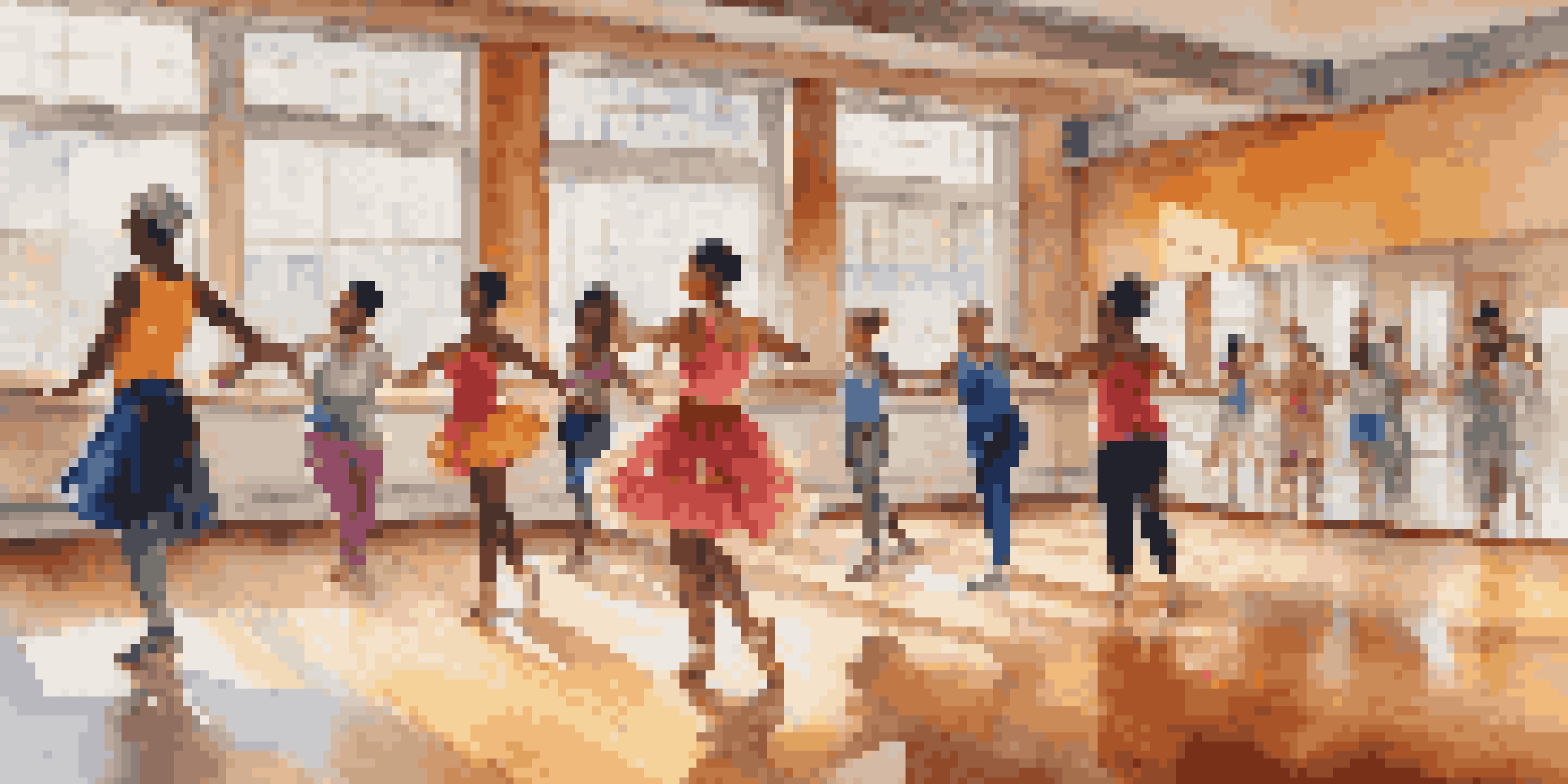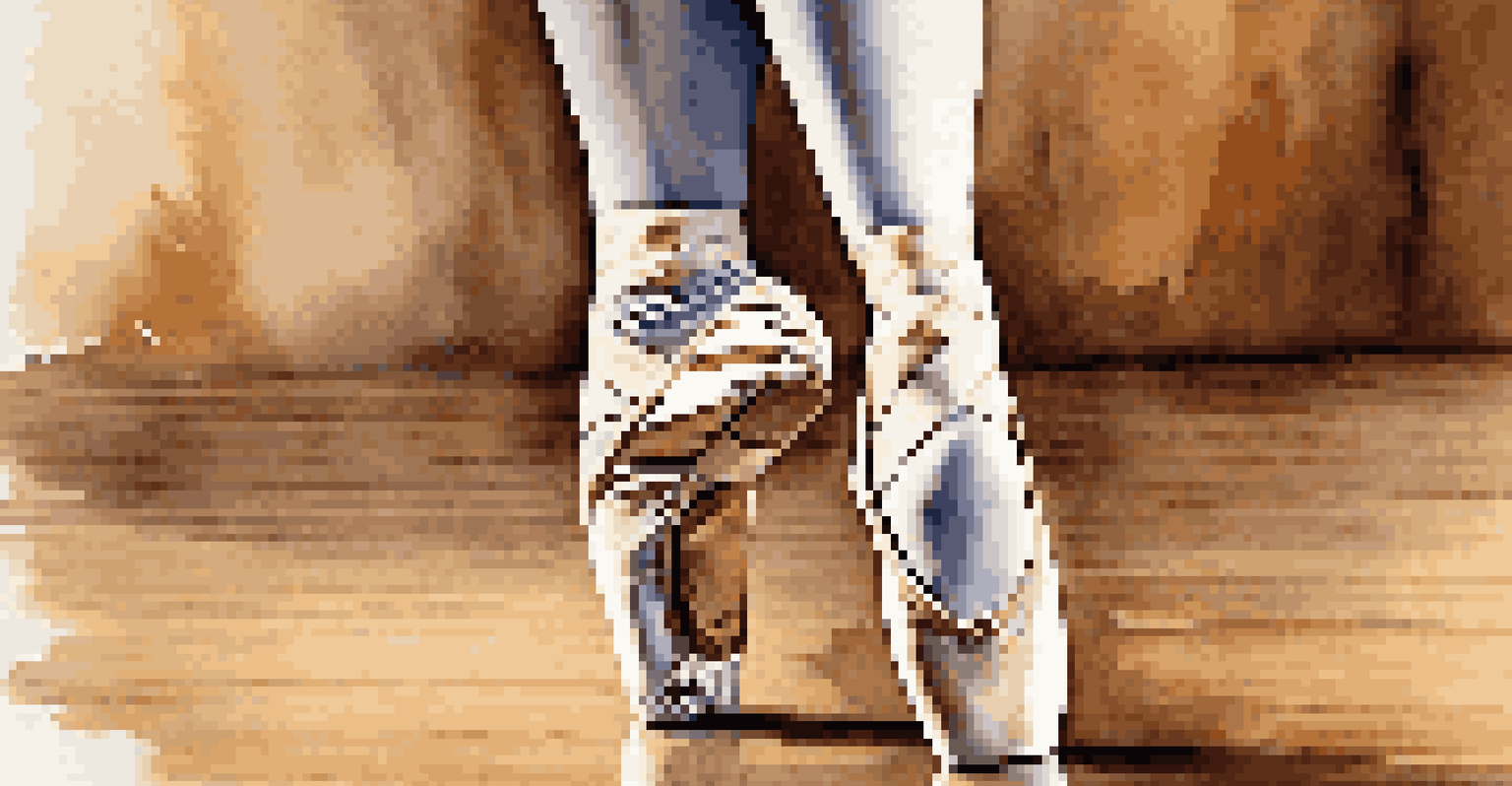The Science of Dance: How Movement Affects Brain Health

Understanding the Connection Between Dance and Brain Health
Dance is more than just an art form; it’s a powerful workout for the brain. Engaging in dance activates various brain regions, promoting cognitive function and emotional well-being. The rhythmic movements and music combine to create a unique experience that stimulates neural pathways, enhancing overall brain health.
Dance is the hidden language of the soul.
Research shows that physical activity, particularly dance, can help reduce the risk of cognitive decline as we age. When we dance, our brains release feel-good chemicals like endorphins, which can improve our mood and reduce stress. This combination of physical exertion and emotional uplift contributes significantly to brain health.
Moreover, dance encourages social interaction, which is another vital aspect of maintaining cognitive health. When we dance with others, we not only build connections but also enhance our cognitive skills through communication and teamwork. This social component amplifies the brain-boosting effects of dance.
The Role of Neuroplasticity in Dance and Movement
Neuroplasticity is the brain's ability to reorganize itself by forming new neural connections. Dance plays a significant role in this process by challenging our bodies and minds with new movements and rhythms. Each time we learn a new dance step, we stimulate neuroplasticity, paving the way for improved cognitive functions.

For instance, learning choreography requires memory, attention, and coordination, which are all crucial for brain health. As we practice, we strengthen neural pathways involved in these functions, making them more efficient. This not only helps us remember the steps but also enhances our overall cognitive abilities.
Dance Boosts Brain Health
Engaging in dance activates various brain regions, promoting cognitive function and emotional well-being.
Additionally, engaging in dance can lead to increased brain volume in areas responsible for coordination and motor control. This increase is linked to better performance in various cognitive tasks, showcasing how dance can enrich our minds just as much as our bodies.
Dance as a Tool for Stress Reduction and Mental Clarity
One of the remarkable benefits of dance is its ability to reduce stress levels. When we move to music, our bodies naturally release tension, allowing us to feel more relaxed and centered. This release is crucial for maintaining mental clarity and emotional balance in our daily lives.
Dancing is like dreaming with your feet!
Moreover, dancing can serve as a form of meditation in motion. The focus required to follow rhythms and patterns allows our minds to break free from distractions, creating a meditative state. This mental clarity can lead to improved decision-making and problem-solving skills, which are essential in both personal and professional settings.
Incorporating dance into your routine can be a fun and effective way to manage stress. Whether it's a quick solo dance session at home or a lively group class, the positive effects on your mind and body are undeniable.
How Dance Improves Memory and Cognitive Function
Dance is a fantastic way to boost memory and cognitive function. Different dance styles often require memorization of intricate steps and sequences, which challenges and exercises the brain. This mental workout can enhance both short-term and long-term memory.
Studies have shown that older adults who participate in regular dance classes demonstrate improved memory retention compared to those who do not. This improvement can be attributed to the combination of physical activity, social interaction, and mental engagement that dance provides.
Neuroplasticity and Dance
Learning new dance steps stimulates neuroplasticity, enhancing memory, attention, and overall cognitive abilities.
Furthermore, dance encourages the use of both hemispheres of the brain, fostering creativity as well as analytical thinking. This dual activation can lead to enhanced problem-solving skills, making dance a holistic approach to brain health.
The Impact of Dance on Emotional Well-Being
Dance is deeply linked to emotional expression and well-being. Engaging in dance allows individuals to express feelings and release emotions that might otherwise be difficult to articulate. This emotional outlet can lead to increased self-awareness and personal growth.
Participating in dance can also foster a sense of belonging and community. Whether in a class setting or during social dances, the connections made through shared experiences can significantly enhance emotional health. These connections provide support and encouragement, which are vital for mental well-being.
As we dance, our brains release neurotransmitters like serotonin and dopamine, which are known to improve mood and combat feelings of anxiety and depression. This natural high can lead to a more positive outlook on life, further reinforcing the emotional benefits of dance.
The Neurochemical Benefits of Dance and Movement
Dance triggers the release of several neurochemicals that contribute to better brain health. One key player is endorphins, often referred to as the body's natural painkillers, which create feelings of happiness and euphoria. This is why many people feel a sense of joy after a dance session.
Additionally, oxytocin, known as the 'bonding hormone,' is released during social dancing. This hormone supports feelings of trust and connection, which can enhance relationships and overall emotional health. Together, these neurochemicals create a powerful mix that promotes mental well-being.
Dance Reduces Stress and Enhances Mood
Dancing can lower stress levels and increase feelings of happiness through the release of neurochemicals like endorphins.
Furthermore, regular dance sessions can help regulate cortisol levels, the stress hormone, thereby reducing anxiety and stress. By keeping these levels in check, dance not only enhances mood but also contributes to long-term brain health.
Incorporating Dance into Your Daily Routine
Incorporating dance into your daily routine doesn’t have to be complicated. Whether you’re a seasoned dancer or just starting, there are numerous ways to weave movement into your life. Simple activities like dancing around your living room or taking a dance class can be both enjoyable and beneficial.
Consider setting aside time for dance breaks during your day. Even a short five-minute dance session can help lift your spirits and refresh your mind. Whether it’s through freestyle movement or following a choreographed routine, the key is to have fun and feel the music.

Lastly, explore different styles of dance to keep things exciting. From salsa to hip-hop, each style offers unique benefits and challenges. The important part is to find what resonates with you, ensuring that you stay motivated and engaged in your dance journey.